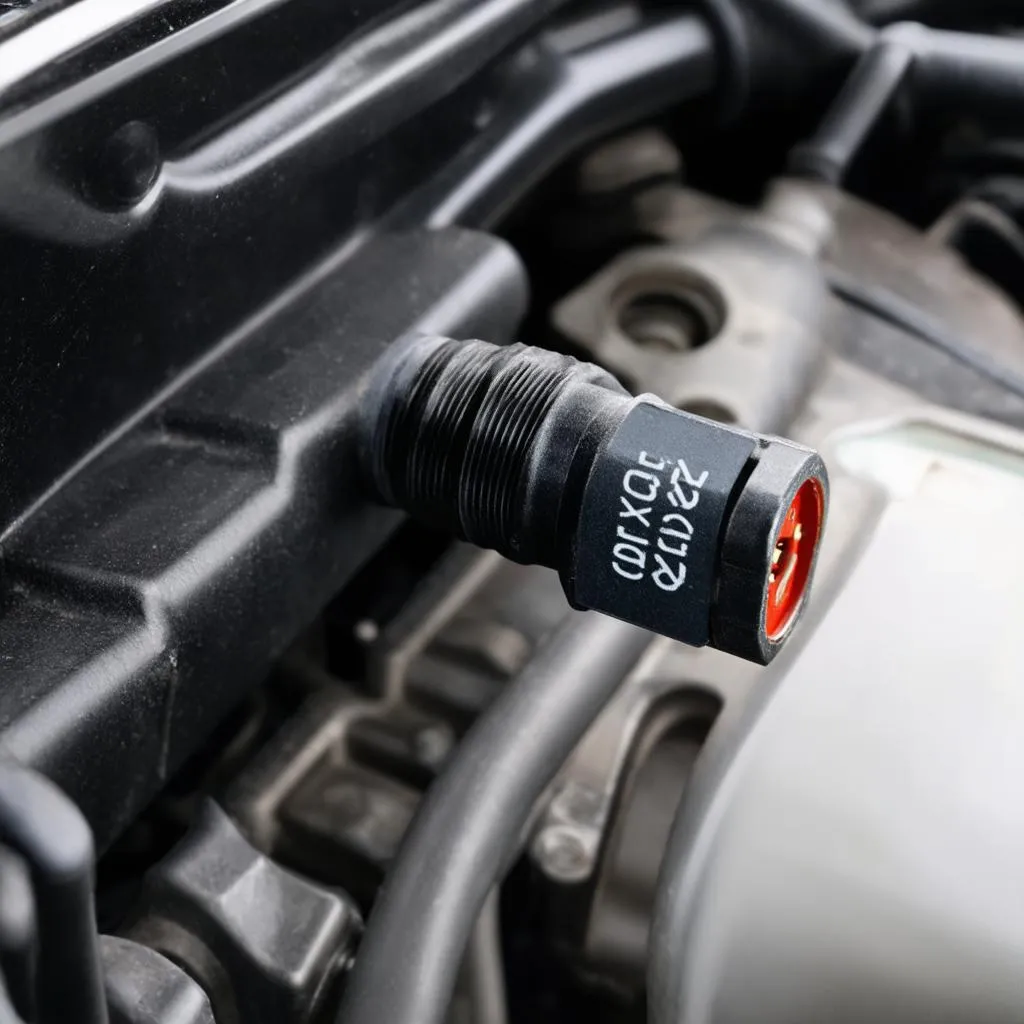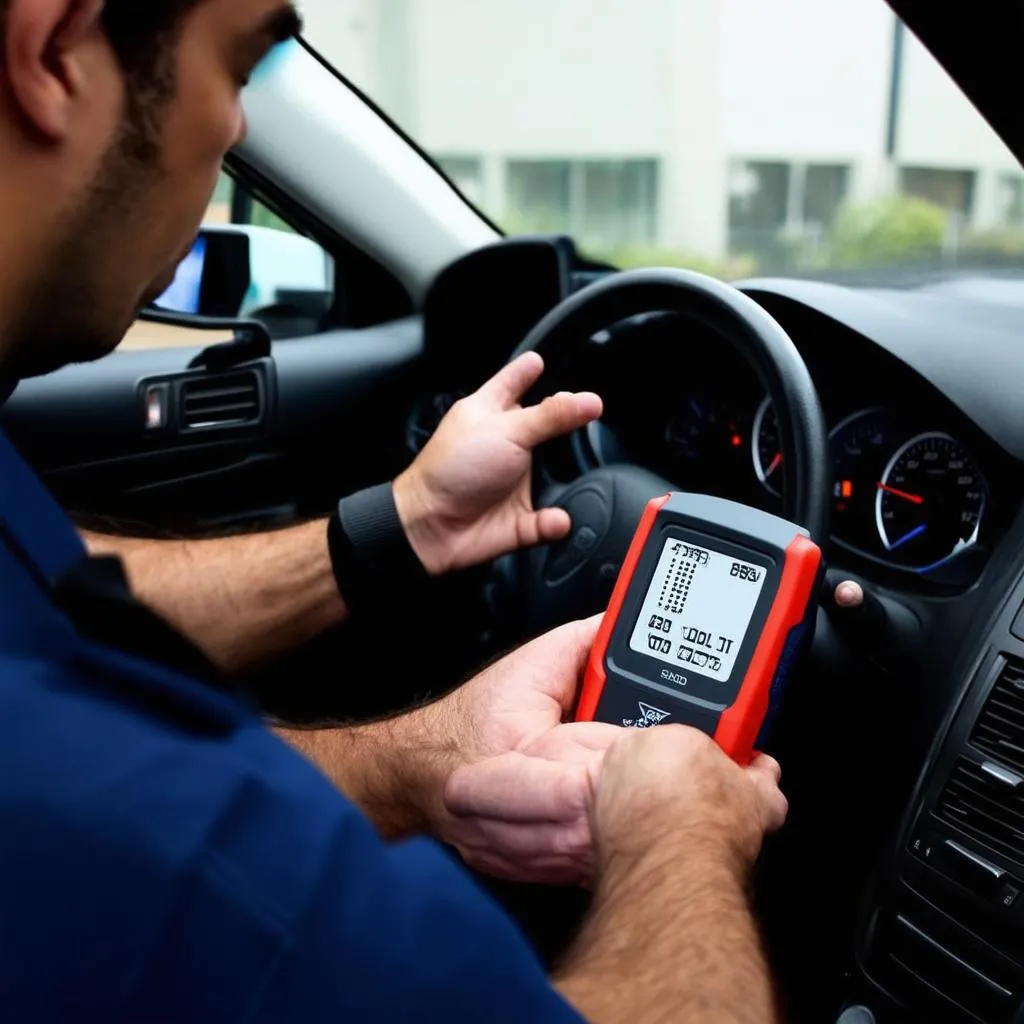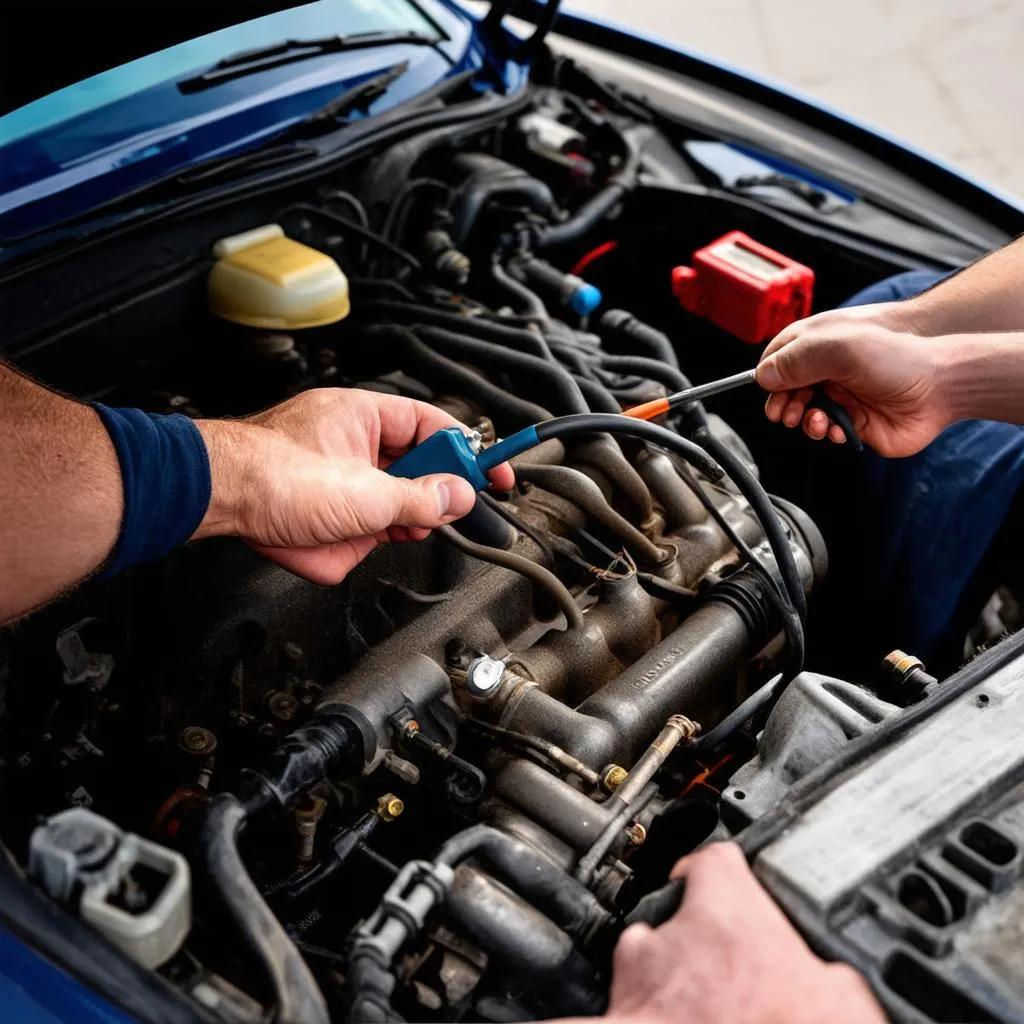Have you ever experienced your car sputtering, hesitating, or refusing to start? These are classic symptoms of a faulty crankshaft position sensor, often indicated by the infamous “P0335” code. It’s like your car is whispering, “Hey, there’s something wrong with my heart!”
What is Obd Code P0335?
Obd Code P0335 is a diagnostic trouble code (DTC) that signals a problem with your car’s crankshaft position sensor (CKP sensor). This sensor, a vital component in your vehicle’s engine management system, plays a crucial role in keeping your car running smoothly by providing information about the crankshaft’s position and speed. It’s like the car’s heart monitor, keeping track of every beat.
Understanding the Code
The crankshaft position sensor is responsible for:
- Timing the ignition system: The CKP sensor tells the car’s computer when to fire the spark plugs, ensuring optimal combustion. Think of it like a conductor leading an orchestra, ensuring every instrument plays in perfect harmony.
- Fuel injection timing: The sensor also communicates with the engine control unit (ECU) to determine when to inject fuel, ensuring the engine receives the right amount of fuel at the right time. It’s like the car’s chef, meticulously measuring and mixing the fuel for the perfect recipe.
- Vehicle speed measurement: The ECU uses the CKP sensor data to calculate your car’s speed, providing information to your speedometer and other systems. It’s like the car’s GPS, tracking every mile you travel.
When the CKP sensor malfunctions, the ECU can’t get an accurate reading, leading to various problems, including:
- Engine misfire: The ignition timing is thrown off, causing the engine to sputter and misfire. It’s like a singer trying to hit a note without proper pitch, resulting in a discordant sound.
- Rough idle: The engine may idle roughly or stall altogether. It’s like a drummer with unsteady beats, throwing the whole song off.
- Difficulty starting: The engine may struggle to start or not start at all. It’s like an athlete trying to sprint without warming up, leading to a slow and sluggish start.
- Check Engine Light: The “Check Engine Light” will illuminate on your dashboard, reminding you that your car’s heart needs attention.
What Causes Obd Code P0335?
Several factors can contribute to a faulty crankshaft position sensor:
- Worn out sensor: Over time, the CKP sensor can wear out due to normal use and exposure to extreme temperatures. It’s like an old clock that eventually needs a new battery.
- Damaged wiring: Damaged or corroded wires can disrupt the signal between the sensor and the ECU. It’s like a broken telephone line interrupting communication.
- Contamination: Dirt, debris, or oil leaks can accumulate on the sensor, interfering with its operation. It’s like a clogged ear, preventing you from hearing properly.
- Electrical problems: Faulty wiring or connections in the electrical system can also trigger the P0335 code. It’s like a power surge that disrupts your computer’s performance.
- Loose or damaged connectors: Loose or damaged connectors between the CKP sensor and the wiring harness can also disrupt the signal. It’s like a loose connection in a lamp, causing the light to flicker.
Troubleshooting Obd Code P0335
If you encounter the P0335 code, follow these troubleshooting steps:
- Inspect the CKP sensor: Check for signs of wear, damage, or contamination. If the sensor looks dirty or damaged, it needs to be replaced.
- Check the wiring: Inspect the wiring for damage, corrosion, or loose connections. Repair or replace any damaged wiring.
- Check the connectors: Ensure the connectors are secure and free of corrosion. Clean or replace any faulty connectors.
- Test the sensor: If you’re comfortable with electrical testing, you can use a multimeter to check the sensor’s resistance and voltage output.
- Scan the codes: Use an OBDII scanner to get a more specific code description. This can help you pinpoint the exact problem area.
Pro Tip: You can use a mechanic’s stethoscope to listen to the CKP sensor. If you hear a clicking sound, the sensor is likely working properly. If you hear a grinding or scraping sound, the sensor may be faulty.
Replacing the Crankshaft Position Sensor
Replacing the CKP sensor is relatively simple, but it’s essential to follow the correct procedures:
- Disconnect the battery: Always disconnect the negative battery terminal before working on any electrical components.
- Locate the sensor: Consult your car’s repair manual or online resources to find the CKP sensor location. It’s usually located near the crankshaft, often on the front or side of the engine.
- Unplug the connector: Gently disconnect the wiring harness from the sensor.
- Remove the old sensor: Using a socket wrench, remove the sensor from its mounting bracket.
- Install the new sensor: Carefully install the new sensor in its mounting bracket. Tighten the bolts to the manufacturer’s specifications.
- Reconnect the connector: Securely reconnect the wiring harness to the sensor.
- Reconnect the battery: Reconnect the negative battery terminal.
- Clear the code: Use your OBDII scanner to clear the code and test the engine.
Pro Tip: When purchasing a new CKP sensor, ensure it’s compatible with your car’s make and model.
Obd Code P0335: Common Questions and Solutions
Q: Can I drive my car with P0335 code?
A: It’s best to avoid driving your car with the P0335 code. A faulty CKP sensor can lead to serious engine problems and safety hazards. If you must drive, do so with caution and avoid high speeds or strenuous driving conditions.
Q: What are the potential consequences of ignoring the P0335 code?
A: Ignoring the code could lead to:
- Engine damage: A faulty CKP sensor can cause the engine to misfire, leading to wear and tear on internal engine components.
- Reduced fuel efficiency: The engine may consume more fuel than usual, leading to higher running costs.
- Increased emissions: The engine may emit more pollutants, contributing to environmental issues.
- Safety hazards: A malfunctioning CKP sensor can result in a loss of engine power, making it difficult to accelerate or brake effectively, increasing the risk of accidents.
Q: How much does it cost to fix a P0335 code?
A: The cost of repairing a P0335 code can vary depending on the make and model of your car, the severity of the problem, and the labor costs in your area. The cost of a new CKP sensor can range from $50 to $200, while labor costs can range from $50 to $150.
Q: Does the P0335 code always indicate a faulty CKP sensor?
A: While a P0335 code usually points to a CKP sensor issue, it’s essential to perform a comprehensive diagnosis to rule out other potential problems, such as:
- Faulty wiring: Damaged or corroded wiring can cause the same symptoms as a faulty sensor.
- Engine control module (ECU) failure: A faulty ECU can also trigger the P0335 code.
- Loose or damaged connectors: Loose or damaged connectors can also disrupt the signal between the sensor and the ECU.
Q: How can I prevent future P0335 codes?
A: Here are some tips:
- Regular maintenance: Schedule regular oil changes and tune-ups to keep your engine running smoothly.
- Inspect wiring: Periodically inspect the wiring for signs of damage or corrosion.
- Clean the sensor: Clean the CKP sensor with a clean cloth to remove any dirt or debris.
- Avoid extreme temperatures: Protect your car from extreme heat and cold temperatures, as they can damage the sensor.
The Cosmic Connection:
Some believe that the P0335 code is a message from the universe, a sign that you need to pay attention to your car’s health and well-being. After all, a car is a complex machine with many interconnected parts, each playing a vital role in keeping it running smoothly. Just as the stars align in the cosmos, the intricate workings of your car’s engine require harmony and balance.
Beyond the Code:
Remember, a “Check Engine Light” can be a sign of a small problem or a larger issue. It’s always best to get your car diagnosed by a qualified mechanic to determine the root cause and ensure it’s fixed correctly.
 Crankshaft Position Sensor
Crankshaft Position Sensor
 OBD Scanner
OBD Scanner
 Mechanic Inspection
Mechanic Inspection
Need Help?
Don’t let the P0335 code stress you out! We can help. Contact us via Whatsapp at +84767531508 to get expert guidance and troubleshooting support for your European car. Our team of automotive technicians is available 24/7 to assist you.
Want to know more? Check out our other articles on OBD codes and car diagnostics: https://techcarusa.com/2405-obd/.
Don’t hesitate to leave a comment below with any questions or share your experiences with OBD code P0335. We’d love to hear from you!